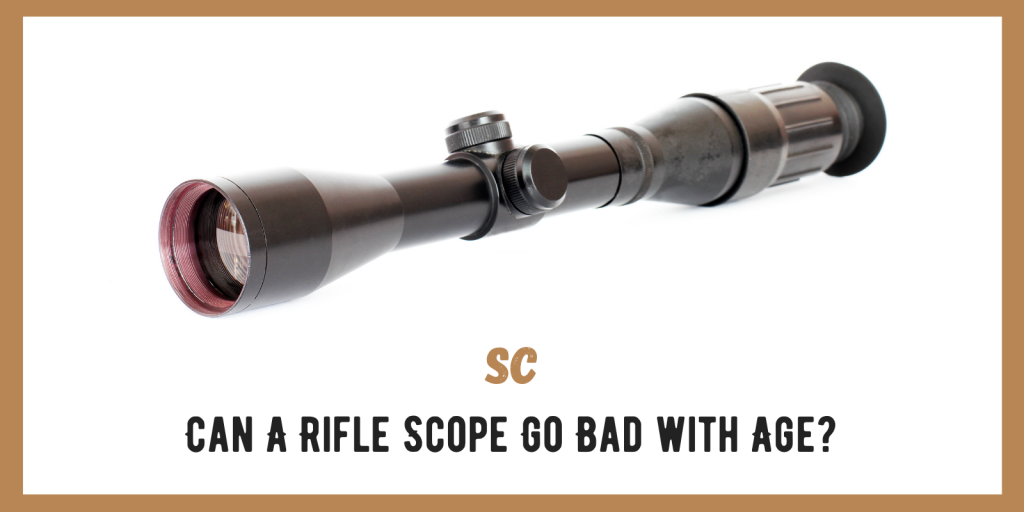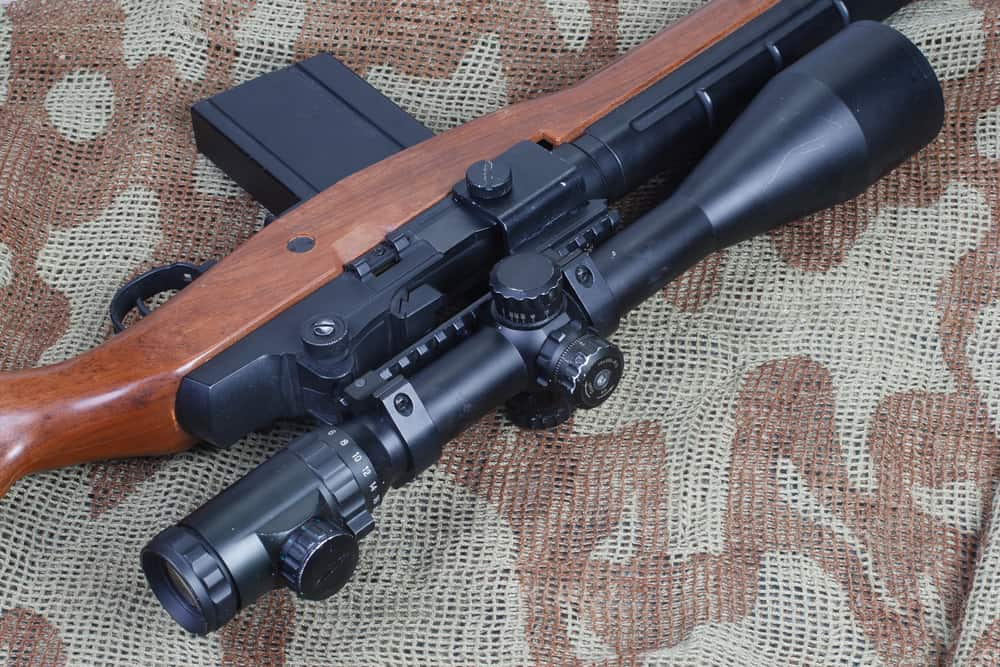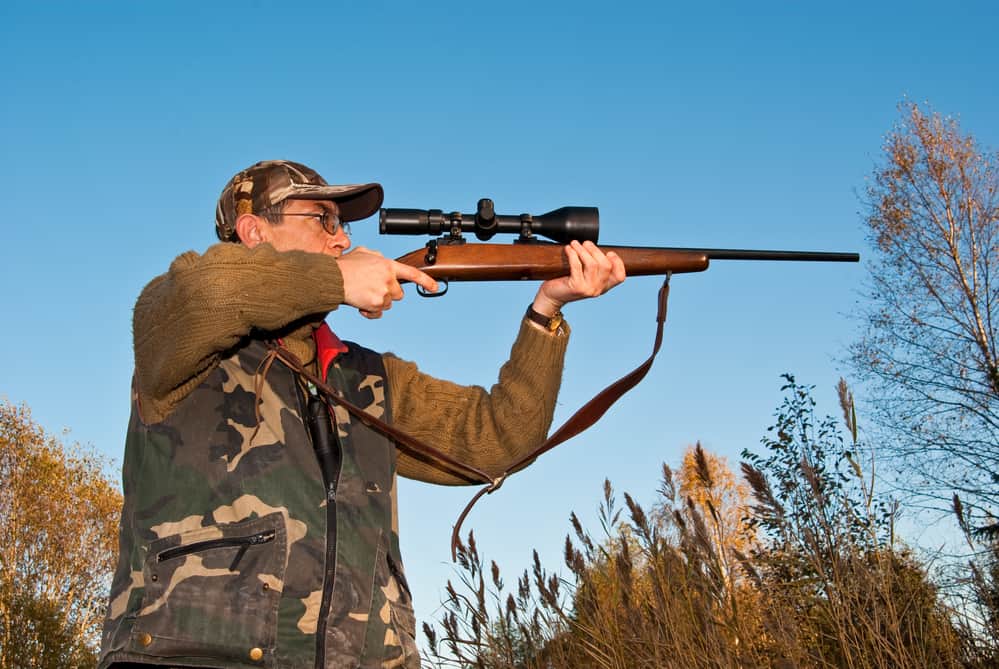We all have them. Gun safe queens. Those rifles with scopes that sit in the gun safe for years, maybe even decades, without seeing sunlight. You may even have unmounted scopes sitting on the shelf waiting patiently for a rifle. Do these rifle scopes go bad with age?
Riflescopes are precision instruments. In most cases, the quality of the construction, the amount of physical use, and the care that these instruments receive determines their life expectancy. Quality rifles scopes, even when used regularly, if cared for properly, should last many years without problems.
Understanding your riflescopes operation and construction is critical to keeping it operating at peak efficiency over many years. As with most other precision instruments, the better the materials and construction, the longer you can expect a riflescope to last. You should measure a riflescope life span in years or even decades.
SKIP AHEAD
Why Riflescopes Fail
In general, riflescopes don’t fail because of age. Riflescopes usually fail mechanically. These failures are often the result of rough treatment or wear associated with normal uses of the riflescope. I will discuss some of the more common failures that riflescopes suffer in this article.
Erector System Failures
The most complicated part of any riflescope is the erector system. The erector is the internal mechanical parts adjusted by the windage and elevation turrets to change the aim. Think about how small and precise these parts are and still fit inside that one-inch aluminum tube and withstand a 300 Win Mag recoil.
Add to these requirements the wear and tear these parts often endure as you make adjustments and corrections to the point of aim over many years of shooting. Each time a scope is adjusted, those small parts of the erector system are stressed and experience metal on metal wear. Like any mechanical device, this type of wear is cumulative and will eventually fail.
Seals
Almost every riflescope has seals that protect the delicate internal parts of the riflescope. In general, building a riflescope involves these steps.
- After assembling the rifle scope, the scope attaches to a vacuum pump that evacuates the air from inside the scope.
- The manufacturer removes as much of the air as possible from inside the scope. Most companies use dry nitrogen gas to refill the tube. The dry nitrogen gas prevents the scope from fogging and keeps the internal parts of the scope dry.
- Openings in the scope tube are sealed using various methods, including rubber O-rings, Teflon seals, other methods. Since many of the openings into a scope tube allow moving parts to interact, these seals can fail from normal use.
- Seals may also fail as the scope is subject to shock and recoil. Seals around the lenses may suffer from these kinds of stress.
If your scope begins to fog or you notice water drops inside the scope, a seal failure is usually the culprit. Many better scope manufacturers will check your scope, replace seals as necessary, and refill your scope with dry nitrogen for a nominal charge. Having your scope serviced by the manufacturer can extend its working life for many years.
Shock and Recoil
We all feel the effect of recoil on our bodies when we fire our rifles. The punishment that a large caliber hunting rifle inflicts on your shoulder is magnified many times on the internal parts of your riflescope. It is no wonder that many riflescopes suffer internal failures in the erector system or the optical glass after the shock of many repeated recoils.
In general, shock damage occurs from the sudden acceleration forces as the gun recoils back and then stops. These high acceleration forces manifest in several specific areas of the scope.
- Some scopes will suffer damage to the seals around the lenses and the turrets. The high vibration levels caused by recoil can eventually degrade the seals allowing them to leak.
- The delicate parts of the erector system used to adjust the windage and elevation on your scope must endure repeated stress of many kinds. Each shot of your rifle imparts G-forces that can cause metal parts to eventually fatigue and fail.
- The reticle mounts can easily loosen and allow the reticle to wander or even disappear from your scope. Recoil can break the reticle mounts on some scopes rendering the scope unusable.
- Mechanical failures can occur to the scope body. If not properly mounted and supported on the rifle, the scope’s tube may torque and eventually crack or separate at the joints.
Like most mechanical damage, these problems occur without warning. Generally, rifle shooters who have suffered this type of damage on a riflescope report no warning signs of imminent failure. You may not easily recognize the failure looking at the scope. Performing some diagnoses is often necessary. When there is any question about your scope’s integrity, a trip back to the manufacturer for service is the best option.
The Oops Factor – Accidental Damage
Even the most careful hunter or competitive shooters can suffer the oops factor. Those unexpected small disasters that can ruin a hunting trip or put an end to a competitive match happen without warning.
Unfortunately, these accidents are often outside our control. Anyone who travels to a hunt puts their rifle and riflescope in the hands of strangers with a prayer that things go well. You do your best by packing your rifle and scope in the best possible cases, but even then, things happen. When you can’t see or control your rifles and scope, an unforeseen accident can seriously shorten a scope’s lifespan.
How to Ensure a Long Life for your Scope?
In general, to ensure a long life for your riflescope, you should look for the same things that you look for in a quality optical instrument. Among the things that I consider are:
- The reputation and history of the manufacturer – Nothing speaks louder about quality, reliability, and performance than what other shooters and hunters say about a manufacturer. The internet has made gathering data about the performance of almost any product from real-time users. Riflescopes are no different. A few minutes spent doing a bit of research can speak volumes about what to expect from a riflescope.
- Don’t buy features you don’t need – Every feature added to a rifle scope increases the chances that something will fail. Simple, single magnification scopes are, by nature, the most dependable. Variable magnification scopes add complexity to the internal components. Parallax adjustments, diopter adjustments, and illuminated reticles all bring more opportunities for failure. Keep your scope as simple as possible unless you really need these extra options.
- Mount and Install your Scope Properly – A scope that isn’t mounted correctly can allow the stresses of repeated shooting to affect the scope’s operation negatively. High-quality mounts and following the manufacturer’s recommendations will provide secure mounts that can help protect your scope from damage.
- Protect Your Scope when Not in Use – Lens caps and scope socks are great ways to protect your riflescope when it isn’t in use. If you transport a valuable rifle and scope combination, hard cases are your best option. Be sure that the protective interior of any hard case doesn’t put undue stress on your riflescope or its parts.
Riflescopes can last for years with a little care. I have a pair of 10 power binoculars with 50mm objective lenses that belonged to my wife’s grandfather. Her grandfather was an avid hunter and shooter. Based on the wear on the body of these binoculars, I am sure that he used them regularly.
The Test of Time
I recently got these binoculars out of their leather case. The woven neck strap was deteriorated and not to be trusted. The lenses were dusty, and the body of the binoculars was dirty. Looking through this more than 70-year-old optical device, I was astounded at the clarity and sharpness of the images. I quickly adjusted the eyepieces for my vision and was rewarded with beautiful views down a mountain valley in New Mexico.
I carefully cleaned the lenses and the metal body of these binoculars. I found a new leather neck strap that is in keeping with the age of these binoculars and replaced the rotten woven strap. I now have a pair of fine binoculars that ride proudly in our travel trailer. To my eye, there is no deterioration or degradation in the quality of these binoculars in more than 70 years.
A Testament to Quality and Care
Any riflescope of good quality that receives adequate care should experience the same sort of lifespan. I know hunters who are still shooting a rifle and scope combination 20 and 30 years after mating the two.
These are not hunters who baby their equipment. These rifles and scopes have been on Alaska bear hunts and Montana elk hunts. The conditions these scopes have endured are about as extreme as you can imagine.
The telling points of these experiences are the quality of the scope and the care that these scopes and rifles get regularly. These hunters and shooters made good choices initially and understood how to maintain a rifle and scope to ensure dependability and longevity.
Our Choices for the Scope Brands with the Longest Life
There are certain manufacturers and brand names that stand out from the crowd. The scope brands that routinely get the best reviews are:
- Schmidt & Bender – This German optics company has a long history of building precision rifle scopes. Many Schmidt and Bender rifle scopes manufactured in the early 20th-century still providing accurate shooting on rifles in the 21st century. Schmidt and Bender are at the apex of scope design and manufacturing. You will pay for the quality, but your riflescope will be making accurate shots for generations to come.
- Leupold – Ask most shooters and hunters in the USA for their top three choices of riflescopes, and you can bet that Leupold will be in that mix. Leupold is considered by many as the premier optics manufacturer in the United States. Leupold designs, manufactures and assembles its scopes in the United States and provides warranty and repair services to their customers.
- Vortex Optics – Vortex Optics is the newcomer in the optics world. However, the quality of their scopes and the reliability built into their designs have become almost legendary. Couple the quality and the durability of these scopes with the Vortex Optics no questions asked warranty, and the result is an undeniably attractive package. I am a huge fan of Vortex Optics products, and many of my rifles wear a Vortex Optic.
Many other manufacturers build incredibly good scopes that will last for many years with a little care and maintenance. Don’t discount a scope because it is not on this shortlist. Do your research and make your decisions. You may discover the next addition to our list for us.
An Investment in Quality Pays Off
Much like my wife’s grandfather’s binoculars, investments into the future may come without realizing what is happening. I am sure that the thought of someone using his binoculars 70 years into the future was the last consideration he made when buying those binoculars.
I know that when I select a riflescope, passing that scope down to my children or grandchildren is extremely low on my priority list. However, if you choose wisely and make good decisions, there is no reason a riflescope cannot become an investment into the future and a working family heirloom.




